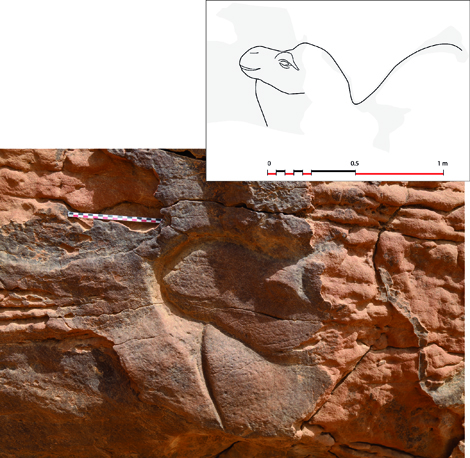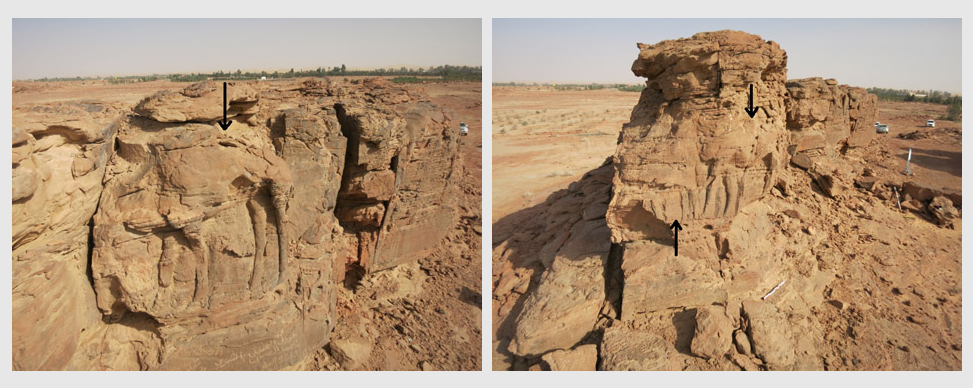Archaeologists from France’s National Center for Scientific Research (CRNS) and their colleagues from the Saudi Commission for Tourism and National Heritage (SCTH) have discovered camelid sculptures “unlike any others in the region” dating back to the first centuries BC or AD, according to a press release from the CRNS.
The find sheds new light on the evolution of rock art in the Arabian Peninsula, the CRNS said.
The recently-discovered sculptures are located in the Al Jawf province in northwest Saudi Arabia. The “Camel Site,” as it is known, was explored in 2016 and 2017 by a Franco-Saudi research team. According to CRNS, the sculptures, some incomplete, “were executed on three rocky spurs there. Though natural erosion has partly destroyed some of the works, as well as any traces of tools, the researchers were able to identify a dozen or so reliefs of varying depths representing camelids and equids.”
“Though the site is hard to date, comparison with a relief at Petra (Jordan) leads the researchers to believe the sculptures were completed in the first centuries BC or AD,” CRNS writes. “Its desert setting and proximity to caravan routes suggest Camel Site–ill suited for permanent settlement–was a stopover where travelers could rest or a site of worship.”

© Antiquity – CNRS/MADAJ, photo C. Poliakoff, drawing G. Charloux
The Camel Site is merely the latest in a string of archeological discoveries in Saudi Arabia in recent years.
Last year, nearly 400 structures dating back thousands of years were found, with many clustered in Harrat Khaybar, a volcanic field located north of Medina in Saudi Arabia. Using Google Earth imagery, archeologist David Kennedy examined burial sites and other so-called Works of the Old Men, created by nomadic tribes thousands of years ago, according to a profile featuring his discoveries in the New York Times.
In August, a team led by landscape archaeologist Paul Breeze of King’s College London used high-resolution satellite imagery, aerial imagery, and geological maps to identify 46 archaeological sites beside ancient lakes in Saudi Arabia’s western Nefud Desert, in the northern part of the Arabian Peninsula.
Efforts to open up Saudi Arabia to the world as part of Saudi Arabia’s Vision 2030 include a new program to issue tourist visas for the first time, allowing foreigners access to Saudi Arabia’s heritage sites.









